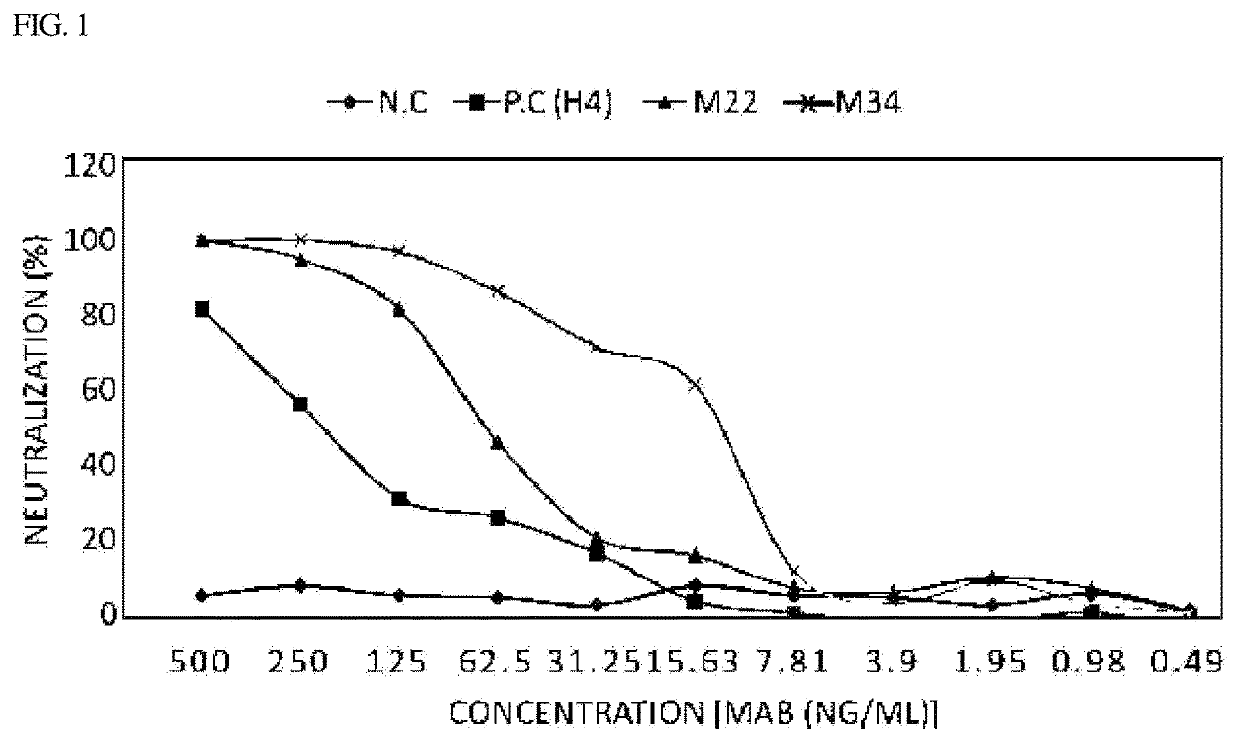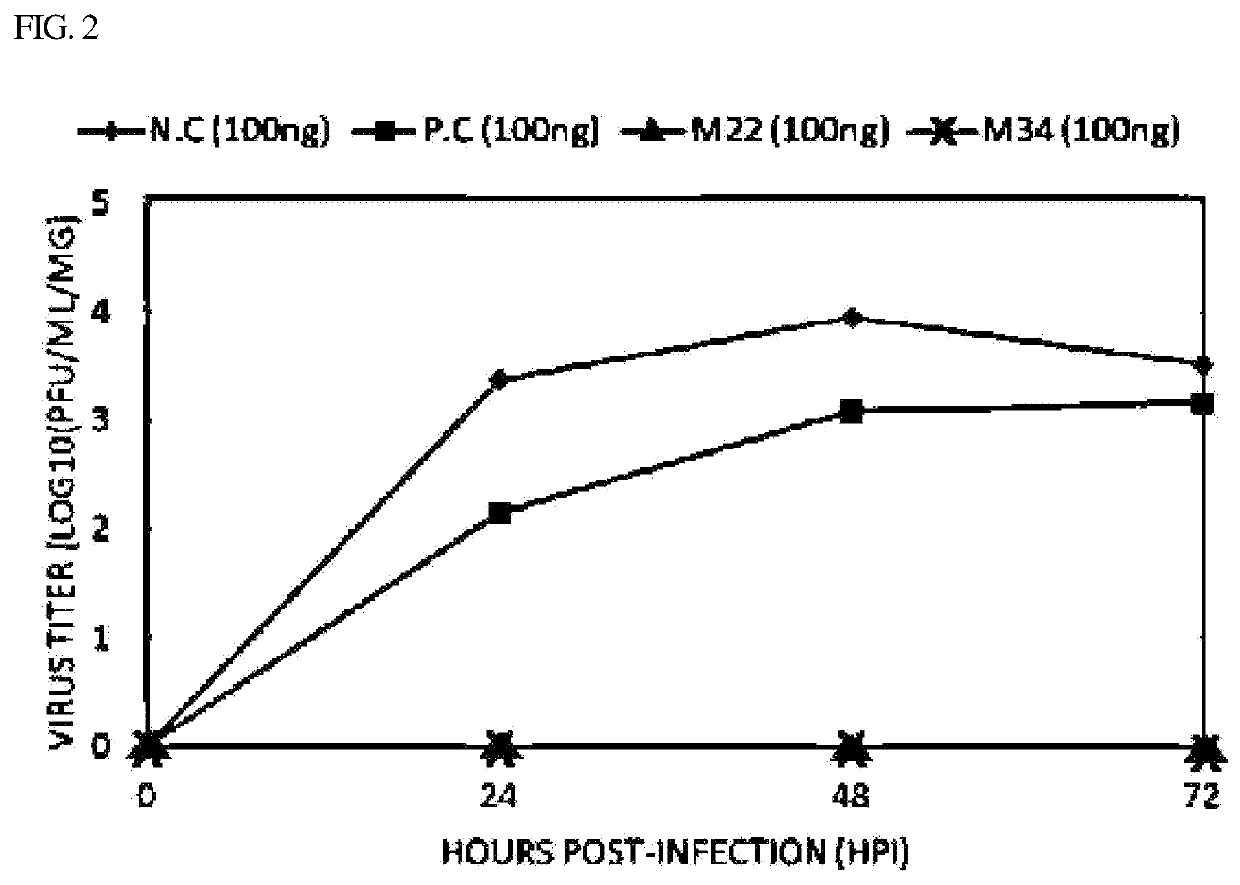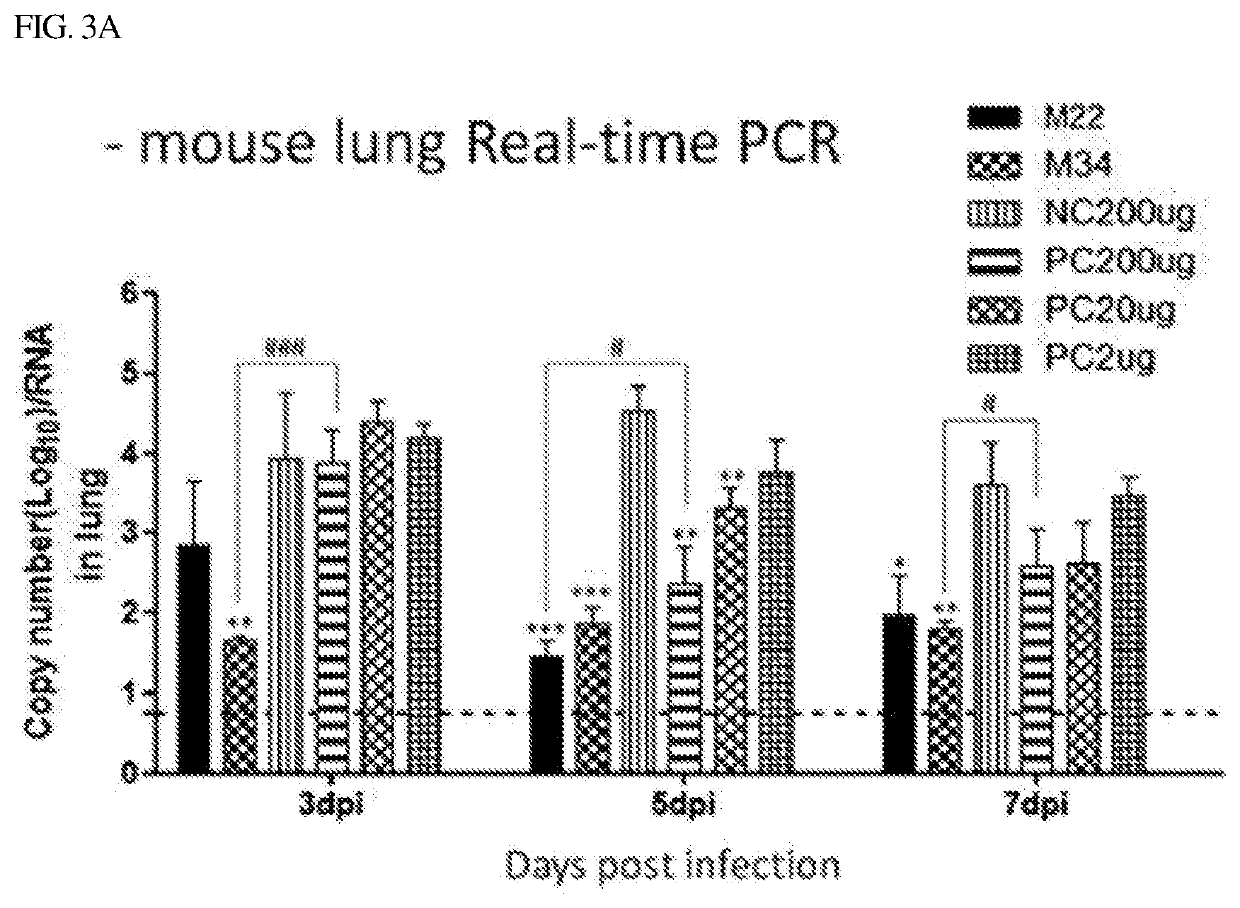Binding Molecule Having Neutralizing Activity Against Middle East Respiratory Syndrome-Coronavirus
a technology of coronavirus and binding molecule, which is applied in the field of binding molecule having neutralizing activity against middle east respiratory syndrome coronavirus, can solve the problems of limited human-to-human transmission and non-persistent transmission, and achieve the effects of strong binding ability, neutralizing activity and useful in the prevention, treatment or diagnosis of mers-cov infection
- Summary
- Abstract
- Description
- Claims
- Application Information
AI Technical Summary
Benefits of technology
Problems solved by technology
Method used
Image
Examples
example 1
of PBMCs from Blood of Patients Recovered from MERS-CoV
[0074]Blood donors were those who were confirmed to have been infected with MERS-CoV in 2015 and no longer exhibited viruses as a result of treatment, and the donor selection and blood collection processes were performed under the approval of the Institutional Review Board (IRB). After donor selection, about 30 ml of whole blood was collected, and PBMCs (peripheral blood mononuclear cells) were isolated using a Ficoll-Paque™ PLUS (GE Healthcare) method. The isolated PBMCs were washed two times with a phosphate buffer solution and then stored in a liquid nitrogen tank at a concentration of 1×107 cells / ml in a freezing medium (RPMI:FBS:DMSO=5:4:1).
example 2
n of Antibody-Displayed Phage Library
[0075]Total RNA was extracted from the PBMCs isolated in Example 1 using a TRIzol reagent (Invitrogen), after which cDNA was synthesized using a SuperScript™ III First-Strand cDNA synthesis system (Invitrogen, USA).
[0076]Production of the antibody library from the synthesized cDNA was performed with reference to the related literature (Barbas C. et. al. Phage Display: A Laboratory Manual. 2001. CSHL Press). Briefly, light-chain and heavy-chain variable regions of the antibody were amplified from the synthesized cDNA through a PCR (polymerase chain reaction) method using high-fidelity Taq polymerase (Roche) and a degenerative primer set (IDT). The isolated light-chain and heavy-chain variable-region fragments were made into a scFv gene through an overlap PCR method so as to be connected as one sequence in random combination, followed by amplification, cleavage with a restriction enzyme, and isolation of scFv using 1% agarose gel electrophoresis an...
example 3
Using Phage Enzyme Immunoassay
[0077]The phage library culture solution prepared in Example 2 was centrifuged to thus remove host cells, added with 4% PEG and 0.5 M NaCl, and centrifuged, so the phage was precipitated and the supernatant was removed. The precipitated phage was diluted with 1% BSA / TBS to afford a phage library, after which panning was independently performed through binding to and dissociation from various MERS-CoV spike proteins (S proteins), thereby isolating an scFv-phage having the ability to bind to MERS-CoV S protein. For example, the phage library was added to an ELISA plate to which an RBD region (residues 367 to 588 on 51 glycoprotein), which is a portion of the MERS-CoV S protein, was attached, followed by reaction at room temperature for 2 hr. The reaction solution was removed, after which the ELISA plate was washed with PBS containing 0.05% Tween 20 and then added with 60 μl of 0.1 M glycine-HCl (pH 2.2), so the scFv-phage was detached from the antigen, an...
PUM
| Property | Measurement | Unit |
|---|---|---|
| Fraction | aaaaa | aaaaa |
Abstract
Description
Claims
Application Information
 Login to View More
Login to View More - R&D Engineer
- R&D Manager
- IP Professional
- Industry Leading Data Capabilities
- Powerful AI technology
- Patent DNA Extraction
Browse by: Latest US Patents, China's latest patents, Technical Efficacy Thesaurus, Application Domain, Technology Topic, Popular Technical Reports.
© 2024 PatSnap. All rights reserved.Legal|Privacy policy|Modern Slavery Act Transparency Statement|Sitemap|About US| Contact US: help@patsnap.com










